Every business owner wants to expand and invest in newer markets. But most struggle with the decision as they have no proof that customers will support it. But this can change if your business actively measures brand salience and takes steps to improve it.
By monitoring customer signals and feedback, you can know your standing in the market and try to become the #1 choice against all odds.
This blog post is the ultimate guide on brand salience and helps you grow your brand by measuring this important metric.
Table of contents
What is brand salience?
Brand salience is a marketing metric that describes the degree of importance or prominence a brand holds in the consumers’ minds during their buying decisions.
It tells us about the brand or business’s recall ability and top-of-mind awareness within a product or service category. Strong brands with high brand salience become the preferred choice for consumers when presented with alternatives.
Brand salience helps businesses measure customer loyalty and understand their purchase preferences.
Examples of brand salience
Coca-Cola’s ability to be consistently the top choice in soft drinks is an excellent example of brand salience. The brand has high salience due to its investment in creating a solid presence and positive associations in consumers’ minds. Consumers associate it firmly with soft drinks and choose it over other alternatives.
Another good example of brand salience can be seen in the case of Soulcycle. What did you picture immediately when you saw the brand name? Unique fitness experience, best-in-class service, and popular brand ambassadors, right? That is all correct. The brand has invested time and resources in becoming the #1 choice in fitness for millions of Americans.
Brand awareness vs. Brand salience
Brand awareness and brand salience are two distinct but equally important aspects of brand management. While brand awareness helps create a strong presence in the market, brand salience measures customer preferences, decision-making processes, and influential factors to make the business the #1 choice for consumers.
You must skillfully deploy brand awareness and brand salience campaigns to make your business stand out.
Here is a quick overview of brand awareness vs. brand salience for more clarity:
| SI.No | Brand awareness | Brand salience |
| 1. | Brand awareness is about understanding the familiarity consumers have with a brand. | Brand salience is understanding customer preferences for a brand over competitors within a specific category. |
| 2. | Brand awareness measures the brand recognition of distinctive brand assets, like a logo or brand name. | Brand salience measures customer preferences, purchase trends, and loyalty, influencing decision-making to develop the correct brand positioning. |
| 3. | Brand awareness helps your brand build and establish a strong presence within the market. | Brand salience aims to make your brand the preferred choice against all competitors. |
| 4. | Brand awareness is a pivotal step in brand building, creating a space for additional engagement and brand associations. | Brand salience is a more profound connection that convinces customers that your brand is the only brand to buy. |
Related read: Top 15+ marketing KPIs to track
Why is brand salience important?
Brand salience is incredibly important to your business because it’s the critical difference between someone recognizing you and buying from you. By improving brand salience, you can go from being one of the players to the one you must watch out for.
Some other benefits of high brand salience are:
- Improved brand recall
- Competitive advantage
- Influence on purchasing decisions
- Brand loyalty growth
- Improved market resilience
- Long-term brand equity
Let us look at these benefits to understand the value of high brand salience.
Brand salience results in improved brand recall
High brand salience helps customers associate your business or product closely with the category. A good example is how Xerox is synonymous with photocopy, and asking for a Kleenex is almost the same as asking for a tissue.
When a consumer thinks of a specific product or service, a brand with high salience will be at the top of their mind, improving purchase rates.
Brand salience gives you a competitive advantage
When customers instinctively reach out for your business name when they need a particular product or service, it is a significant competitive advantage. Higher brand salience helps outshine competitors without launching expensive campaigns.
Related read: The guide to competitor analysis with a free template
Brand salience helps influence purchasing decisions
A higher brand salience means that customers feel you are the market’s most capable and trustworthy business. This significantly influences their purchase decisions. They are also more likely to take your cue on pricing, quality standards, and overall expectations.
Brand salience boosts brand loyalty
The more customers remember and use a product, the more attached they become. A brand with high salience enjoys a loyal customer base eager to buy and recommend the brand to others.
Brand salience improves market resilience
When things are hard and uncertain, customers stick with a trusted brand, especially one they have used for a long time. You earn their trust and build a strong bond by establishing your business as the top choice.
This means your business does not have to offer heavy discounts or launch new campaigns to be open.
That is why brands with high salience will ride the storms more resiliently during economic uncertainties.
Brand salience results in long-term brand equity
Businesses that have built a place for themselves in the market become trustworthy and bankable in times of crisis. This directly translates to a more substantial brand equity and improves your business’s value.
What factors influence brand salience?
Building brand salience is a complex effort, and businesses must focus on various factors, such as improving visibility, building a consistent brand language, and strengthening brand positioning.
Knowing what factors influence brand salience can help you take the proper steps to improve your business’s standing in your industry.
The key factors influencing brand salience are:
- Brand visibility
- Consistent branding
- Relevance to customer needs
- Distinctiveness and uniqueness
- Emotional connection
- Marketing and communication strategies
Let us explore these factors briefly to understand their role in building brand salience.
Brand visibility
The more customers see and interact with a brand regularly, the more they consider it an optimum solution. It is one of the most important factors that improve brand salience.
You can achieve a higher brand salience by ensuring your business is visible across local listing forums, target locations, search engines, and social media.
Want to boost brand visibility? Check out the Birdeye View session for expert insights on mastering local listings for visibility and reputation for your business.
Consistent branding
When we think of Peloton or Gold’s Gym, we know what the logo and brand font look like. These brands are consistent in branding, and those images are now fixed in our minds.
The consistent brand image also tells customers you are a professional service provider and pay attention to the details.
Businesses with consistent messaging, visual identity, and personality establish a strong brand image. As consumers encounter this brand image often, it translates into a higher brand salience.
Relevance to customer needs
Businesses can’t achieve high brand salience with just marketing or brand awareness campaigns. You must address the needs and problems of your target audience to be relevant.
A satisfied customer base will help spread the word about the brand, build positive associations, and shape positive brand perception.
Distinctiveness and uniqueness:
A brand will be easily remembered when it stands out from its competitors. Qualities such as unique features, benefits, and product qualities are great differentiators that resonate in the consumer’s mind.
To achieve high brand salience, businesses must constantly innovate and adapt to changing times.
Emotional connection
When a brand draws emotions from consumers on a personal level, it’s likely to be more salient. An emotional brand experience creates a lasting impression, improving brand recall.
Marketing strategies
If your business is already solving essential customer problems but still isn’t the #1 choice, invest in marketing strategies to:
- Showcase your brand value, product offerings, and services
- Spread the word about your brand’s positioning by sharing reviews and customer testimonials
- Reach your target audience via social media, direct marketing campaigns, and reputation marketing.
Marketing strategies significantly influence brand salience as they determine brand visibility, positioning, and establish brand identity.
How to measure brand salience
Brand salience is a hard-to-measure marketing metric as it does not have any direct formula you can use. Brand salience involves measuring brand recall, recognition, customer, and market sentiment.
You can measure brand salience using:
- Sentiment analysis
- NPS
- Surveys
- Focus groups
- Revenue
- Competitor analysis
To know more, let us dive into these methods to measure brand salience in detail.
Sentiment analysis
Customer sentiment is a good measure of brand salience. You can gauge if your brand is the most preferred business or has the potential to become one by measuring customer/market sentiment.
Sentiment analysis tools like Birdeye Insights can help you track and analyze Google reviews, social media mentions, and feedback on public forums.
Birdeye then evaluates the most commonly mentioned keywords and phrases to estimate market sentiment toward your business.
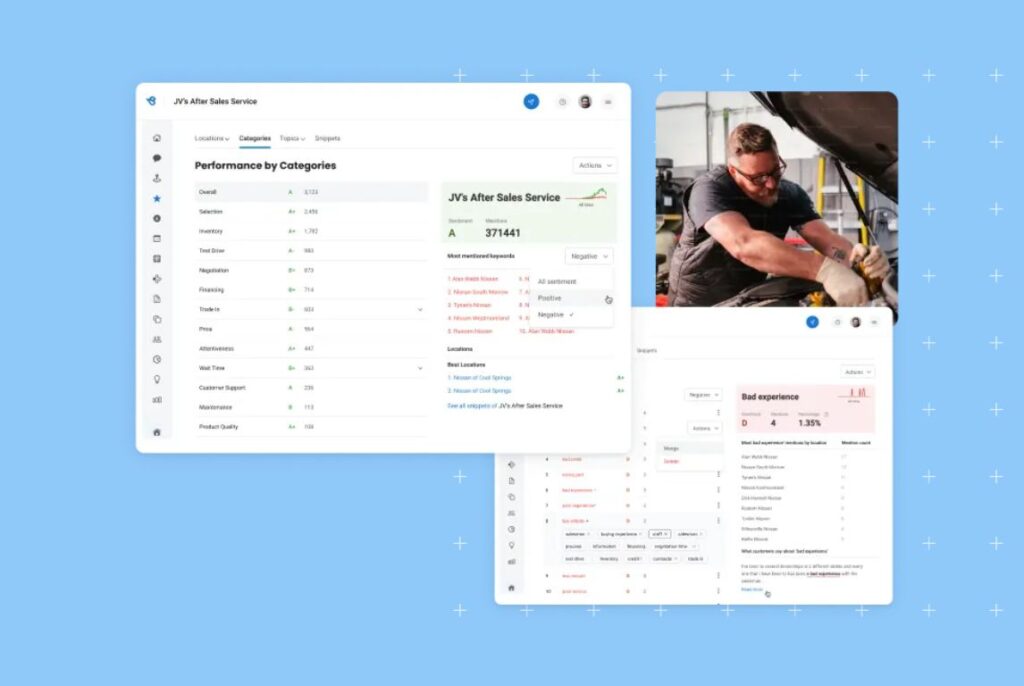
Measure and boost brand salience with Birdeye
Want to be the #1 choice for your customers? Watch the Free Demo Now.
NPS
Net promoter score (NPS) helps measure brand salience by evaluating customer satisfaction and loyalty.
In this method, customers rate a business on a scale of 1 to 5 across a series of questions that indicates their willingness to:
- Purchase from the brand again.
- Recommend the brand.
- Try new products/services from the brand.
- Pay more money for the brand’s products and services.
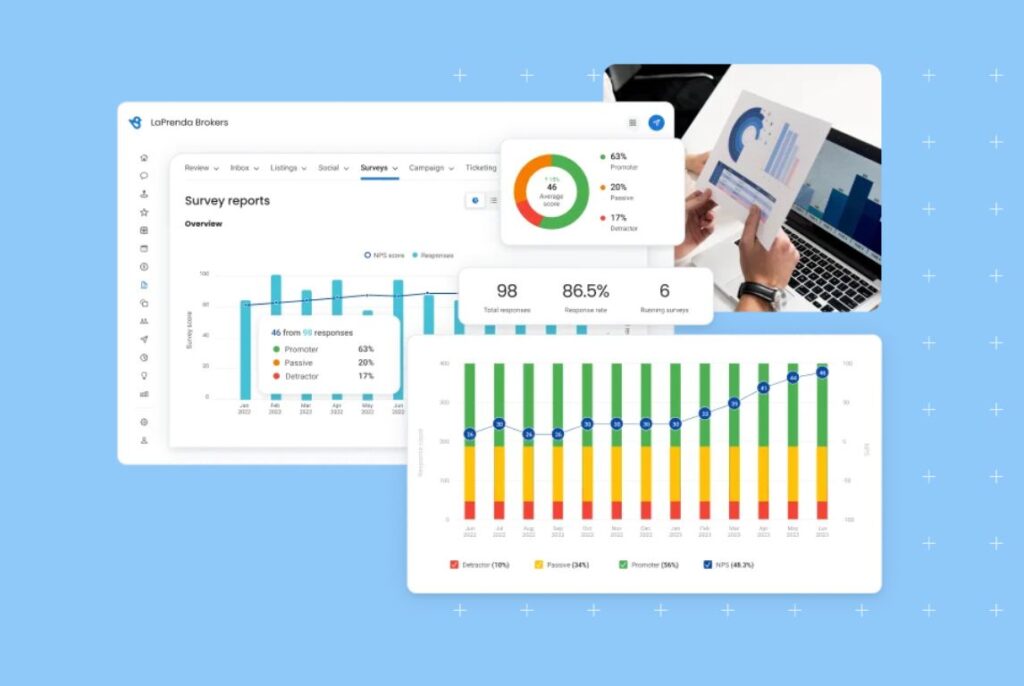
A high NPS score indicates that the customers are delighted with your business, and you are on the fast track to becoming the preferred choice if you are not already.
Surveys
Want more than a single-digit rating to measure brand salience? Send quick pulse surveys or questionnaires to receive detailed customer feedback.
Survey tools like Birdeye Surveys can help you understand customer satisfaction levels, overall customer experience, and collect feedback for specific operational areas.
You can also use brand surveys, product surveys, or general customer feedback surveys based on what you want to know.
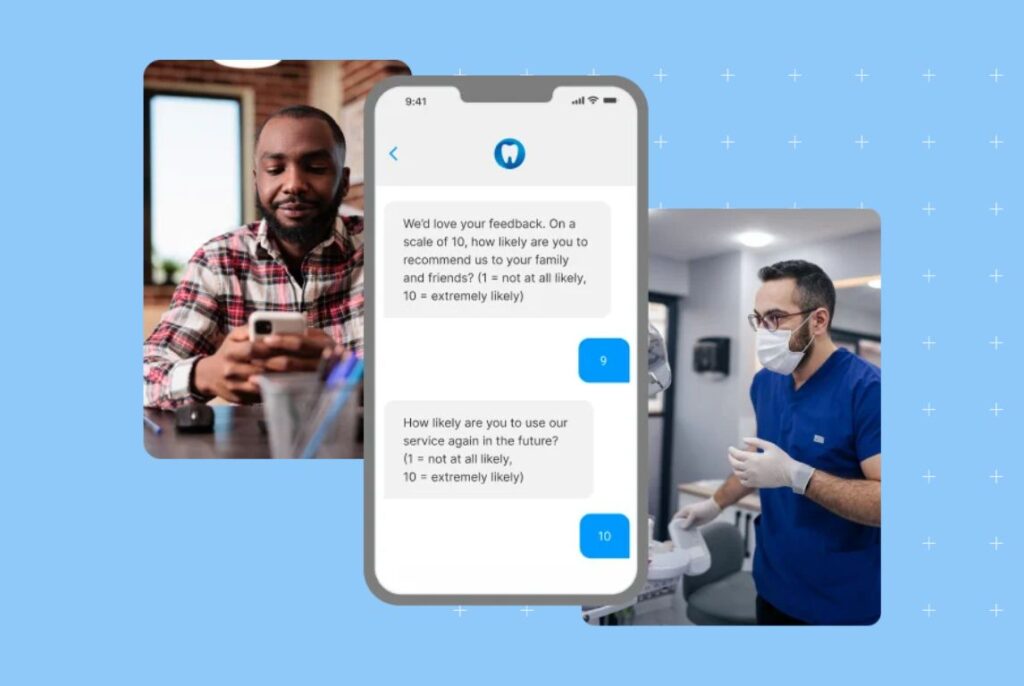
Our robust survey reporting models can help you leverage AI for customer feedback management and analysis. The responses and AI insights can be an effective measure of brand salience.
“A simple survey, easily collected by the Birdeye platform, really enables our practice to understand what customers or patients are feeling and then do something about it.”
– Bill Riley, Medical Advantage Group
Focus groups
For an accurate and unbiased measurement of brand salience, businesses can organize focus groups to test the impact of their brand via market research. You can choose customers from your target audience base and ask them:
- Do they recognize the brand?
- What words/phrases do they associate with the brand?
- Do they use the brand’s products or services?
- Why do they choose this brand?
- Do they feel that the brand addresses their needs adequately?
- What buying situation made you choose this brand?
Develop direct questions that can help you measure how the audience feels about your brand.
Revenue
Revenue figures are a direct indicator of brand salience. Customers recognize and prefer your brand if the sales volume or revenue is high. This is the only metric that provides a solid measure of your brand’s influence on the market.
It also shows your brand’s ability to turn awareness into a purchase.
Competitor analysis
Businesses can also compare their success against competitors over a specific period for a more accurate analysis.
Texas Wood Supply was expanding consistently and needed to monitor their growth and its impact on the market. With Birdeye benchmarking tools, they analyzed reviews and other market trend indicators to understand where they stand.


Our Natural language processing algorithm, Athena, helps them with keen insights to measure brand salience.
Learn more about Texas Wood Supply’s success story for inspiration.
How to improve brand salience
Businesses can invest in simple yet impactful strategies like advertising, social media marketing, branded campaigns, customer experience improvement, and so on to improve brand salience.
Some of the most impactful strategies to improve brand salience are:
- Emotional marketing
- Social media marketing to reach new audiences
- Consistent branded campaigns to boost brand visibility
- Customer experience management
- Display of social proof
- PR campaigns
Let us explore these strategies to see how you can leverage them effectively.
Emotional marketing
Businesses that evoke a strong emotional response from customers enjoy a high recall value. And that is why you must create emotional advertisements and branded digital marketing campaigns for your business.
To create emotionally resonant marketing campaigns, businesses can:
- Explore storytelling in your newsletters, social media campaigns, and advertising campaigns.
- Understand customers’ associations with your industry and how you can tap into them for emotional marketing.
- Design your brand mascot or logo with colors and imagery that evoke a strong response from your audience.
A great example of emotional marketing to improve brand salience is the “Share a Coke” campaign by Coca-Cola. The soft drink business understood that customers enjoy them better with company and launched bottles with “mom,” “dad,” and “friends” written on them. This memorable brand experience was a huge success.

This improved brand awareness and visibility and got people to discuss the brand more.
Social media marketing to reach new audiences
The more people know your brand, the higher brand salience can be.
Social media platforms help businesses reach a wider audience via targeting options, content marketing, and contests.
Businesses must develop an active presence across social media channels and post consistent content that engages the audience and convinces them to choose the brand.
You can also partner with the right influencers for your industry and boost brand recognition, expand your reach, and improve brand salience.
UK-based tech giant Acquia partnered with European experts and tech influencers to recommend their product and become a known brand in Europe.
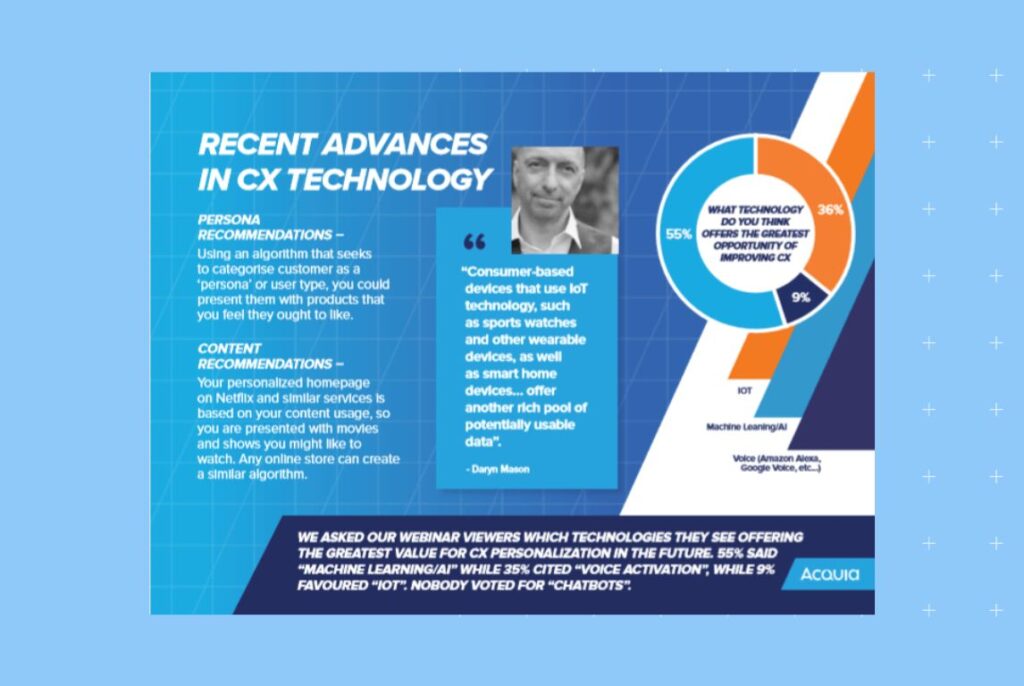
The Acquia B2B influencer campaign was a massive success with a 25 million organic reach.
Consistent branded campaigns to boost brand visibility
All branded campaigns must convey a consistent message, promote your brand values, resonate with your audience, and promote your brand mission.
Consistent branding in your campaigns can strengthen your brand identity and make it more salient and memorable.
You can also invest in consistent and well-targeted advertising campaigns to increase your brand’s exposure. More brand exposure helps keep your brand in the minds of the consumer.
Stay as authentic and consistent as you can for best results. You can also develop brand style guidelines that brands like Starbucks have done to ensure branding consistency.

Customer experience management
Every customer interaction is an opportunity to improve brand salience. The happier the customer is, the more likely they will choose you the second time. They can also instantly become brand ambassadors for your business.
Birdeye research shows that 77% of customers tell their family and friends when they have a positive experience with a brand.
To improve customer experience, businesses can:
- Offer omnichannel customer experience services across SMS, email, and social media messaging.
- Be available 24/7 with AI-powered chatbots.
- Offer integrated appointment and payment solutions so that customers can instantly complete transactions without any wait times.
- Solve customer concerns instantly by implementing a ticketing system for fast-tracking closure.
- Consistently request customer feedback so that customers have an opportunity to share their experience.
Birdeye is a complete customer experience management platform that allows businesses to deliver customer delight from a single dashboard. Check out our pricing today to boost brand salience for your business.
Display of social proof
To become the #1 choice of consumers, you must convince them of your credentials and expertise. And who better to do that than your existing customers?
Use customer testimonials, reviews, and user-generated content on social media to act as social proof for your business.
Create a buzz about your business by regularly sharing social proof on your marketing channels. This will effectively help improve trust in your brand and boost brand salience.
Birdeye offers solutions to collect and reshare customer reviews on social media channels.
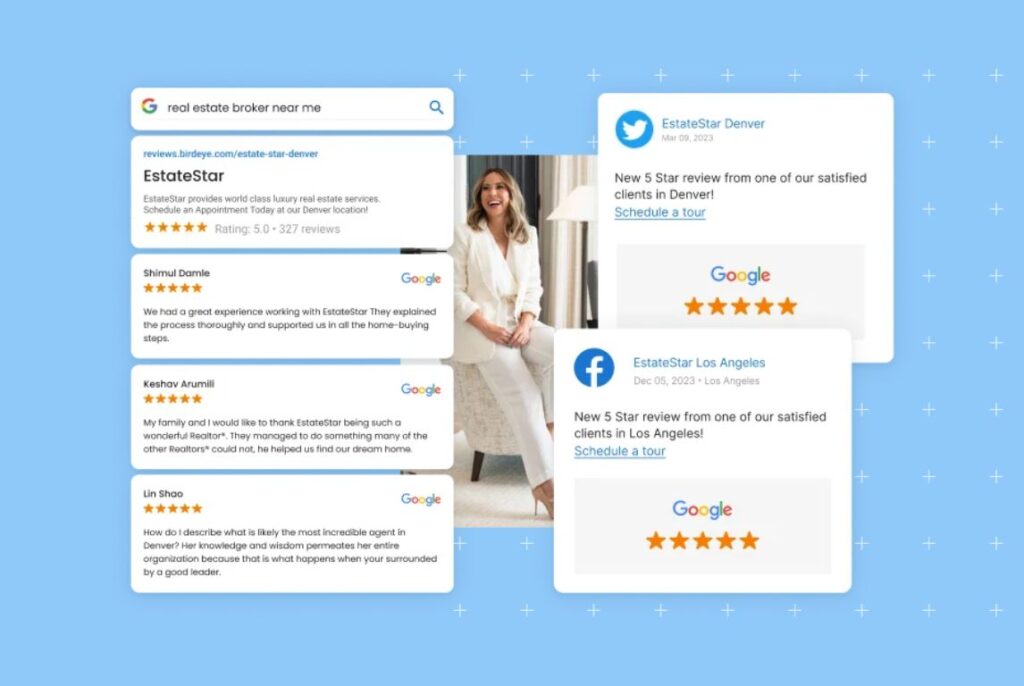
“Birdeye has definitely been an excellent source of the user generated social content to our Fri-yay testimonials, which are super cute. They are created and branded by Birdeye with just a few clicks.”
– Meghan Bingham, Valley Vet Care
PR campaigns
Create effective PR campaigns that generate positive media coverage for your company, brand, and staff. In doing so, you’ll draw favorable public attention. This brand strategy increases brand visibility and establishes your brand’s presence and reliability in the market.
FAQs about brand salience
Brand salience refers to how easily a brand comes to mind when a consumer is actively ready to purchase. Top-of-mind awareness shows a consumer’s immediate mental association between a brand and a particular need.
The three main components of brand salience are recognition, recall, and the association consumers make with a brand.
Brand salience can be built through consistent exposure, compelling messaging, and meaningful associations with the consumer’s needs and values.
Boost brand salience with Birdeye
The role brand salience plays in the success of your brand cannot be understated. Consider these brand salience insights and strategies so you can start making a significant impact in the minds of your customers. Drive customer loyalty and become the household name you know your brand can be!
Get all the brand salience guidance and support you need by leveraging Birdeye’s all-in-one customer experience solutions. Click the banner below to learn more.

Originally published


![this is a 1 / 1 – [Feature image] of the blog about 31 irresistible car sales email templates to close more deals.](https://birdeye.com/blog/wp-content/uploads/Feature-image-31-irresistible-car-sales-email-templates-to-close-more-deals-375x195.jpg)
![[Feature image] Are you on these 40+ powerful eCommerce review sites blog](https://birdeye.com/blog/wp-content/uploads/Feature-image-Are-you-on-these-40-powerful-eCommerce-review-sites_-375x195.jpg)